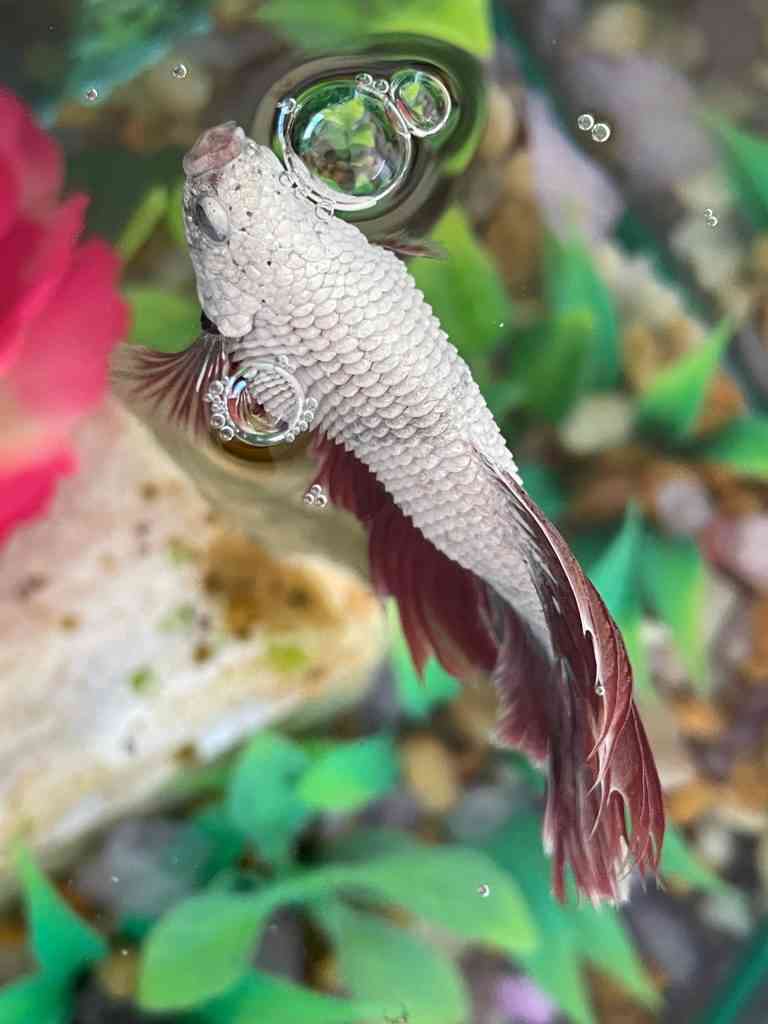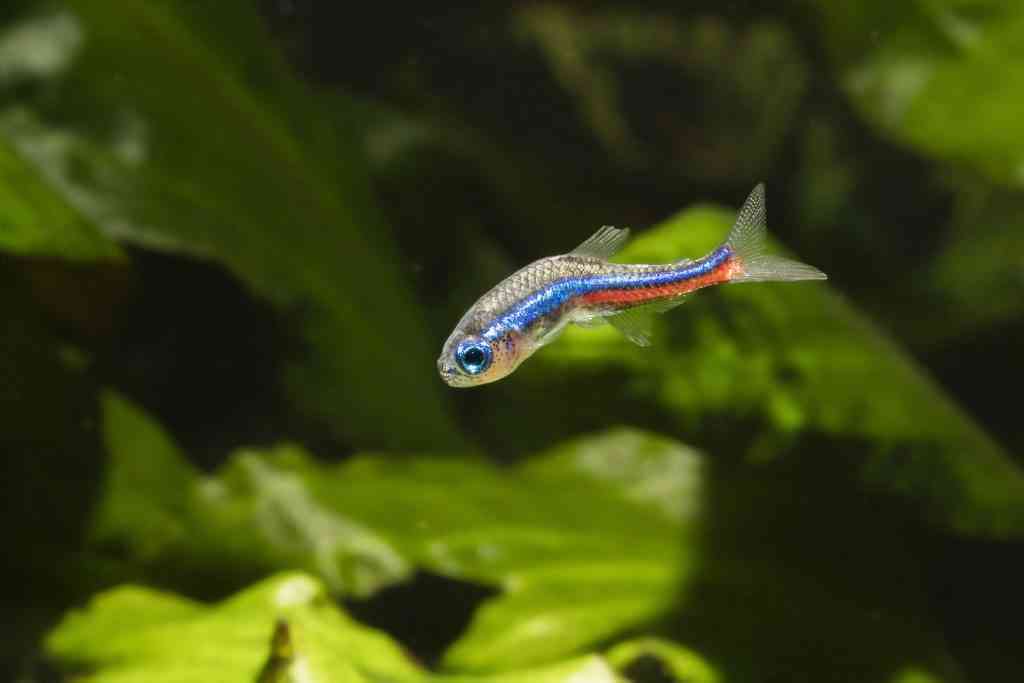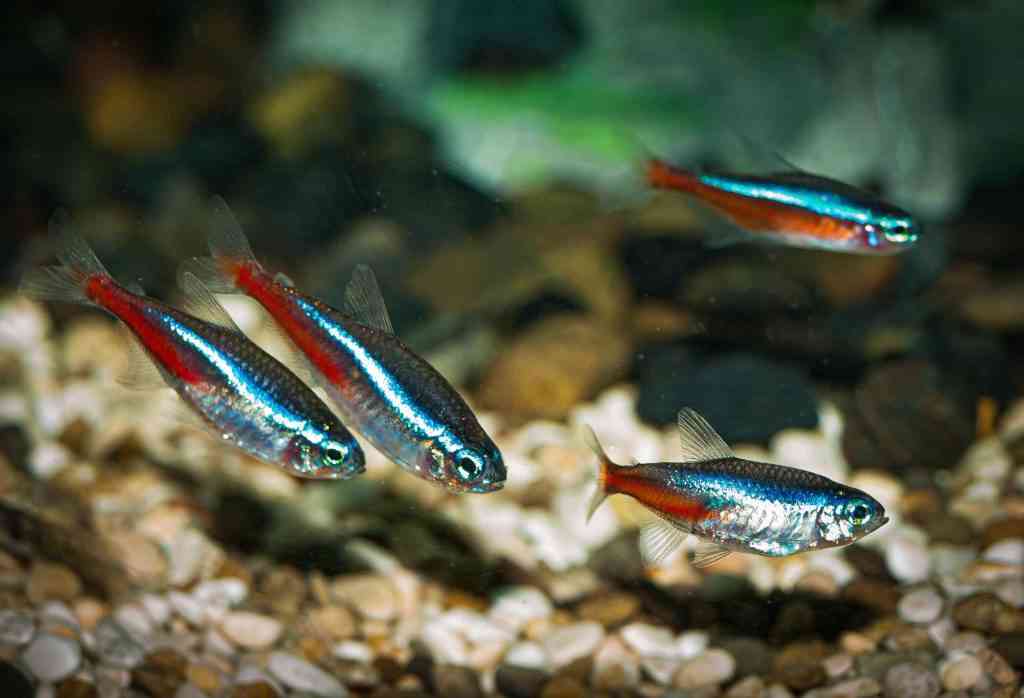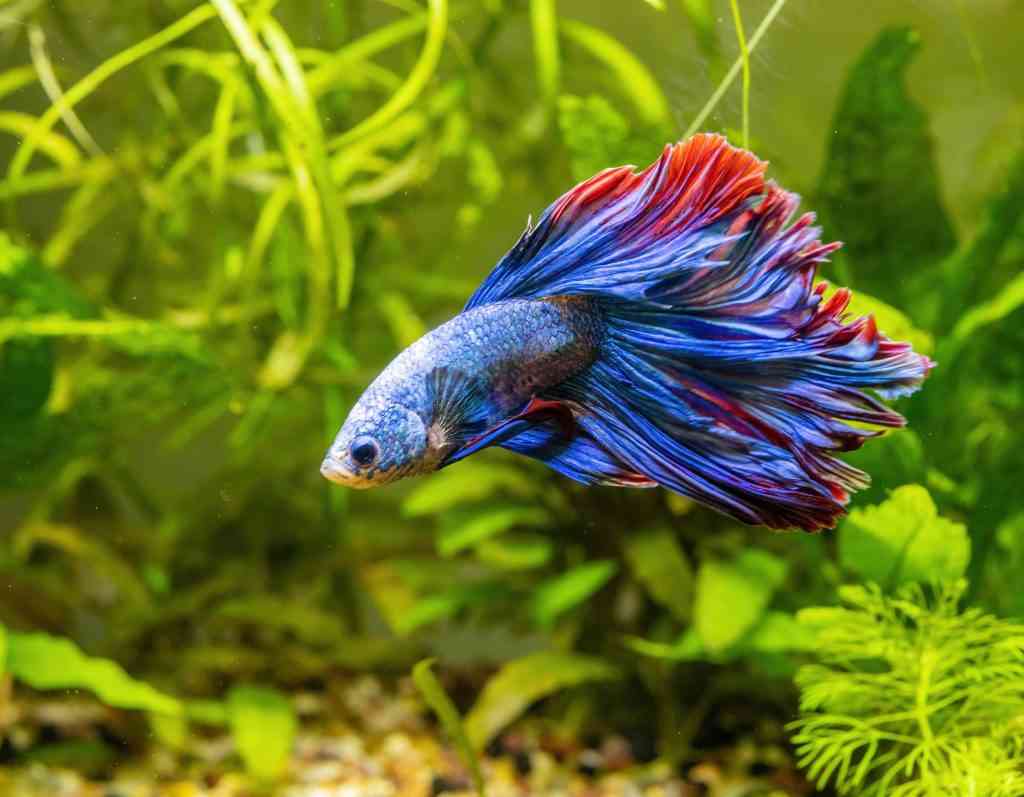Nora Hickey, D.V.M. & Jennifer O. Reynolds, M.A.
Nora and Jen tackle the difficult subject of when and how to humanely euthanize aquarium fish such as bettas, referencing the American Veterinary Medical Association’s recent professional guidelines on this topic and focusing on methods accessible to home fishkeepers, such as using clove oil.

Jen: I have a tough one for us this week Nora. But I think it’s important that we tackle it to help fishkeepers who inevitably will face this. How do we know when it is time to euthanize one of our aquarium fish, and what is the most humane way to do it if we need to? I know I’ve had to deal with this many times over the decades working with fish professionally, and in my hobby as well.
Nora: This is a difficult conversation, not only because euthanasia itself is challenging to discuss, but also because deciding it is time to euthanize a pet is such a uniquely personal decision for the pet owner and the pet.
I had a female betta several years ago who was declining; she ended up having cancer that had metastasized throughout her body, but I didn’t know this at the time I decided to euthanize her. A friend and colleague was generous enough to step in and perform the euthanasia, and I really appreciated that. I already felt bad about having to euthanize the fish, and having to do it yourself makes it even worse.
Euthanizing fish is a procedure that almost every vet clinic has the capacity to do, so I would strongly recommend that anyone who thinks their fish is nearing the end of its life contact their veterinarian for expertise in making this decision and performing this procedure. But before talking about euthanasia procedures, let’s talk about circumstances when it might be time for a fish to be euthanized.
In the case of the female betta fish I mentioned, she had severe skin lesions covering her face and body, she developed “dropsy,” and she was starting to lose interest in food. Those three things in combination made me decide it was time to euthanize her. What are some circumstances where you have decided it is time to euthanize a fish, Jen?
Jen: Gosh, there are so many. That’s a consequence of having spent so long working in the industry and having had so many home aquariums. At the Aquarium, I was fortunate to have the sanity check of the veterinary department available to me. They could help assess whether something was treatable, or not.
But with those years does come experience. As a home aquarist, I think the main thing that will trigger me to decide to euthanize a fish is when I see loss of equilibrium. This is when the fish can’t keep itself oriented and upright in the water column any longer and may be lying on the bottom breathing heavily, unable to swim properly, and sometimes even unable to keep its body straight. This can happen for a number of different reasons but in my experience, it’s very rare for a fish to recover from this.
It’s important to note that all of this is contextual. The circumstance I’m referring to here is not, for example, in the middle of a treatment such as a salt bath or copper or something like that where there is a chance to kill offending parasites and quickly improve the fish’s situation. I think we’ve all had the experience with some tetras, barbs, or other small fish in this state and unfortunately, they can last for days this way sometimes. That’s when I feel providing humane euthanasia was the right thing to do for the animal I cared for.

Nora: Loss of equilibrium is definitely a likely sign that a fish is extremely sick and unlikely to recover. Other things that come to mind are a long period of not eating, severe trauma, and signs of severe systemic disease such as “dropsy.” Sometimes it’s super obvious that a fish is not going to recover, but other times it can be less clear. The best thing to do if you are not sure about the decision to euthanize is to consult with an experienced fish veterinarian, but as we have acknowledged in other conversations, this isn’t an option for everyone.
I think that one of the most useful things I can say here is that the person who is caring for an animal every day usually knows best when an animal’s quality of life has declined to the point that it is time for euthanasia. It is a hard decision for an owner to make, but the vast majority of the time when the owner feels it is time for euthanasia, it is the right choice for the animal.
Jen: That’s a really good point, Nora. At the Aquarium the vets consulted with us and deferred to our direct experience knowing the behavior of the individual fish and our knowledge of the species and what is normal. Experienced aquarists/fishkeepers develop a sort of “fish sense” where they can immediately tell if something is off with one of their fish or with the entire tank.
For newer fishkeepers, they don’t yet have that developed and don’t yet have the experience to know, like you mentioned above, that “dropsy” is usually not something a fish can recover from. Dropsy is a condition that seems to be common in bettas, so many newer betta keepers ask about it. They usually call it “pine-coning” because the scales will stick out from the body.
When there is uncertainty about whether to euthanize, one useful way to think about it would be to consider what your fish did when it was healthy. What were the signs you used to know when your fish was enjoying a good quality of life?
For many of the fish I have, I’d ask myself the following questions. Is my fish seeking and eating food the way they used to, or is something impacting its ability to do this? Is my fish able to swim freely, explore its environment and interact with plants, water currents, or tank decor the way it previously did? If my fish is a social species, is it still able to interact with other members of its species? If the answer to one or all of these questions is no, it could mean it’s time to consider humane euthanasia.

So if the decision is made to euthanize a fish, what options are realistically available to home aquarium hobbyists?
Nora: I want to repeat what I said earlier–euthanizing fish is a procedure that almost every vet clinic has the capacity to do, so I would strongly recommend that anyone who is thinking their fish is nearing the end of its life to contact their veterinarian for expertise with making this decision and performing this procedure.
Jen: Having a vet who is able to do it is ideal. There are a number of drugs that can be used to euthanize fish, but by far the most commonly used is MS-222 or TMS. Using this in a buffered solution was always considered the most humane method of euthanasia during my years at the Aquarium. They use it in smaller doses to sedate fish for procedures, and then a larger dose can be used for euthanasia.
The challenge I’ve had since leaving the professional aquarist world is that I can’t access these drugs now, and the vets I know in my area do a great job on my dog but do virtually nothing with fish. So I’ve had to explore other methods to do this for some of the smaller aquarium fish I have at home. When I worked in a University fish research lab decades ago, they started experimenting with the use of clove oil as a fish anesthetic agent and comparing its use to MS-222.
I believe this option is accessible to home hobbyists as well, since clove oil has many uses aside from this and is available via retail. What can you tell us about clove oil Nora? Is it something hobbyists should consider keeping on hand and using if they don’t have a decent fish vet in their area?
Nora: My professional experience has also centered on buffered MS-222 as the best method for euthanizing fish. However, MS-222 is quite expensive and not something that would be easy for a home aquarist to purchase and use. Clove oil would be a much more accessible and easy-to-use option for fishkeepers who need to euthanize a fish and are unable to find a veterinarian who can help them.
Euthanasia with both buffered MS-222 and clove oil is via overdose, as you alluded to. Smaller dosages of these two drugs anesthetize fish and are reversible. Very high dosages of these drugs are lethal and can be used to euthanize fish.
I would refer anyone interested in learning about the humane euthanasia of fish, or any animal, to the American Veterinary Medical Association’s (AVMA) Guidelines for Euthanasia of Animals. This detailed document describes appropriate methods for euthanizing animals, including fish.
Clove oil immersion overdose is mentioned in the AVMA guidelines as an acceptable method for euthanizing fish when followed up by a secondary method such as decapitation, pithing (penetration into the brain cavity and subsequent destruction of the brain tissue), or freezing. The secondary method is very important because as I mentioned earlier, fish can wake up from MS-222 or clove oil alone. Jen, does this seem like something the average fish owner could reasonably execute at home?
Jen: It does. Clove oil is commonly available, but some care needs to be taken with the amounts, and how it is mixed in the container you’ll use to euthanize your fish because it doesn’t always readily mix with water. There are resources out there which explain the dosing and method. The AVMA also specifically notes that fish should be left in the solution for a minimum of 10 minutes after cessation of opercular (gill) movement. Fishkeepers should consider keeping clove oil on hand for the inevitable day they have to make this difficult decision.
Clove oil isn’t the only readily available option for small fish though. I know that recent research has been done for a method called “rapid chilling” on small fish like zebrafish, and it’s mentioned in the AVMA guidelines you’ve provided. Is this an option people can consider too? If so, how does it work?
Nora: We recently mentioned zebrafish in our “Best Fish for Beginners” article, and you pointed out there that they are used extensively as a model organism for research. A significant amount of work has been produced on how to humanely keep, work with, and euthanize zebrafish. Rapid chilling has been studied in depth with zebrafish, and can likely be applied to other small, tropical fish. Rapid chilling is a euthanasia method where fish are euthanized by immersing them in ice-cold water for an extended period of time. It is important to note that it is not appropriate for koi, goldfish, and other cold-tolerant species.
Jen: The AVMA guidelines specifically mention that rapid chilling is appropriate for tropical fish 3.8 cm or less. To be clear, this means setting up an ice bath and then placing the fish in it once the water is very cold. It does not mean putting them in your freezer, which would not be rapid and is therefore an unacceptable method.
Nora: Yes. Euthanasia means “good death” in Greek, and veterinarians follow AVMA guidelines to animals they euthanize die quickly with as minimal pain and distress as possible. I want to warn our readers that there are some methods of dispatching fish at home that they will come across on the Internet that we consider unacceptable for euthanasia and generally inhumane.
These include exsanguinating (cutting gills, tail, or head so the fish bleeds out) fish that are conscious. Using harsh chemicals such as bleach is also inhumane. Finally, flushing a live fish down the toilet or releasing it into the wild is both horrible for the fish and environmentally irresponsible.
Blunt force trauma can be used to euthanize fish (especially larger fish) if it is followed up with a secondary method such as pithing or exsanguination; however, since fish can be hard to handle and keep still for this procedure, we do not recommend it for home aquarists who are not experienced at fish handling.
Jen: Thanks for summarizing these so well for us Nora. It’s a difficult topic. No one wants to have to euthanize a fish. Hobbyists will inevitably have to tangle with this though, because we deal with so many fish, and they are small animals that are sometimes short-lived. Our best recommendation is to seek out a veterinarian in your area who can help with this. If this isn’t available to you for various reasons, we hope you find the information we’ve provided useful.
As aquarists, we try to provide the best care to our aquarium fish, and I believe this extends to how we help them along when they are clearly suffering and aren’t likely to recover. Knowing that you’ve taken the time to learn about euthanasia methods that have been thoroughly reviewed and are considered humane by veterinary experts can ease the distress we feel in having to do this. You can take some comfort in knowing you did your very best for the fish you committed to care for.
Reputable Resources:

